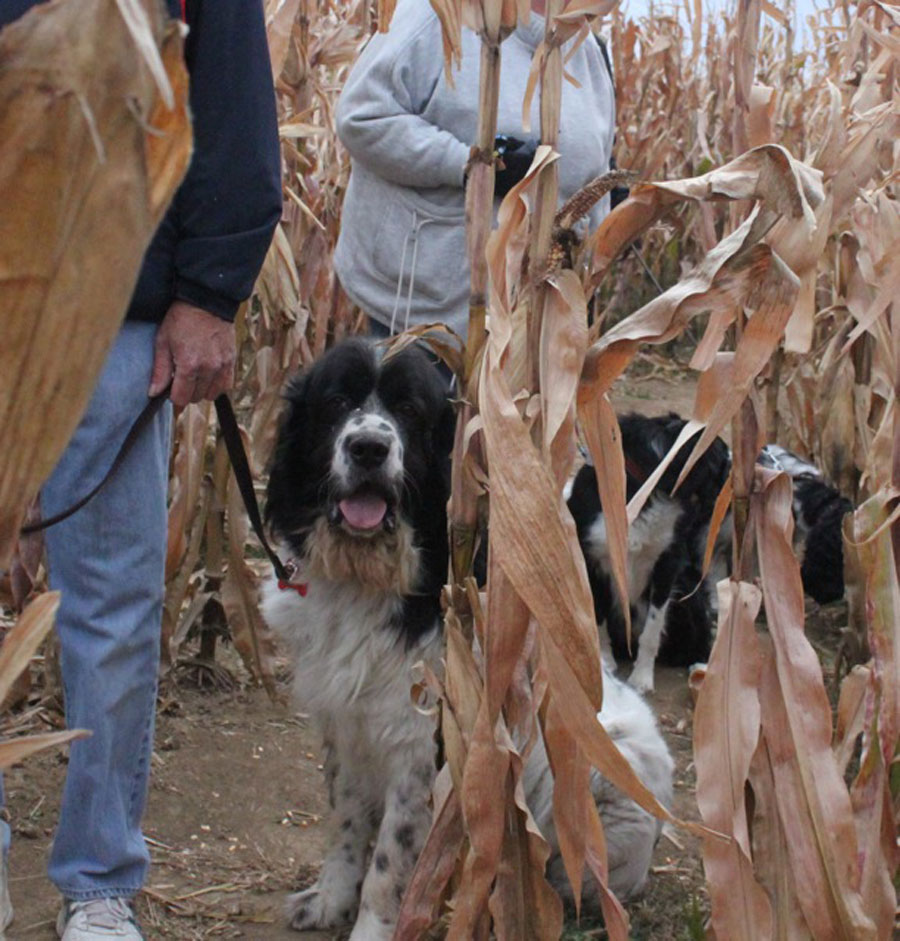Get in Motion to reduce your dog’s stress

One of the statements I am fond of making in my Dubuque dog training classes is “Motion dissipates stress”
I think it is true for us and for our dogs which is why I continually emphasis the importance of walking and exercising the dog. It helps relieve pent up energy, which is the root of so many dog behavior problems.
For today though I want to look at it from the perspective of dealing with fear, anxieties and nervous behavior. Those dogs that get “worried” about every little thing they encounter. The ones that bark at things that are “different” or want to bolt away from “scary stuff”. I often use movement as a major player in the protocol for helping the dog overcome their concerns about people, objects and noises.
The idea is to give the dog “something else” to focus on when faced with a trigger situation. If the “something else” involves a behavior that is movement oriented rather than a stationary position, I believe it allows the dog to process and handle the stressful event more easily.
For example, recently That’s My Dog! had a young German Shepherd Dog in for a board and train program. She was a nice dog but a bit shy and jumpy around new things. We had been teaching her basic obedience skills like walking nicely on a leash and remaining in a stay position for various commands. I had her out for a walk one afternoon and the path we were traveling was parallel (about 50 yards away) to railroad tracks. Part way through our walk I heard a train approaching. She alerted to it when it was about 150 yards away. Her response was to buck up and try to bolt and then to try to hide between my legs. Rather than stop and force her to sit as it approached or to try and calm her through stroking and comforting, I chose to pick up my pace to a slight jog and reinforced she remain in her Heel position.
My goal with the speed increase was to give her a task that made it more necessary to focus on the heel position rather than sticking with the slower, meandering pace that might allow her to go more into panic mode.
After another 3 or so seconds of the bucking at the end of the leash, she followed along and made no further fuss over the train other than to keep a wary eye as it passed by. (remember we were parallel to the tracks and it was approaching us from the front, not behind) Had the train been approaching from behind I may have chose to reverse direction with her and move toward it. I did not want it to appear we were “running away from” the scary thing.
After a few minutes the train had passed by and we continued walking. I didn’t lavish praise or make a big fuss. The goal was to convey confident body language with the subsequent message that this is no big deal, not even worth taking notice of. Far too often I believe people make the mistake of adding too much attention via over zealous praise and affection. In the end this heightens awareness and draws attention to situations that we really want our dogs to learn to take in stride.
I wanted to share this particular story because I think it plays out often when people try to work with their dogs who demonstrate these types of minor fears. As humans who try to comfort their child or another human that “it’s okay” we often make the mistake of stopping our forward motion and use consoling actions to try and convince the dog the big bad scary is not going to hurt them. This has the potentially of inadvertently reinforcing the behavior (fear/barking/lunging) that we want to diminish.
When we remember that dogs crave calm and confident leadership it is much easier to adjust our behavior. Try to view these experiences through the dogs eyes and you begin to understand that being lead safely through an unnerving experience like this is easier than being forced to sit and endure it’s passing.
Next time you’re faced with your dog’s bogey monster.., give it a try and of course if you need help teaching your dog a higher degree of confidence, please call 563-588-3039. We’d be happy to assist and help your dog have a fuller and calmer life.

